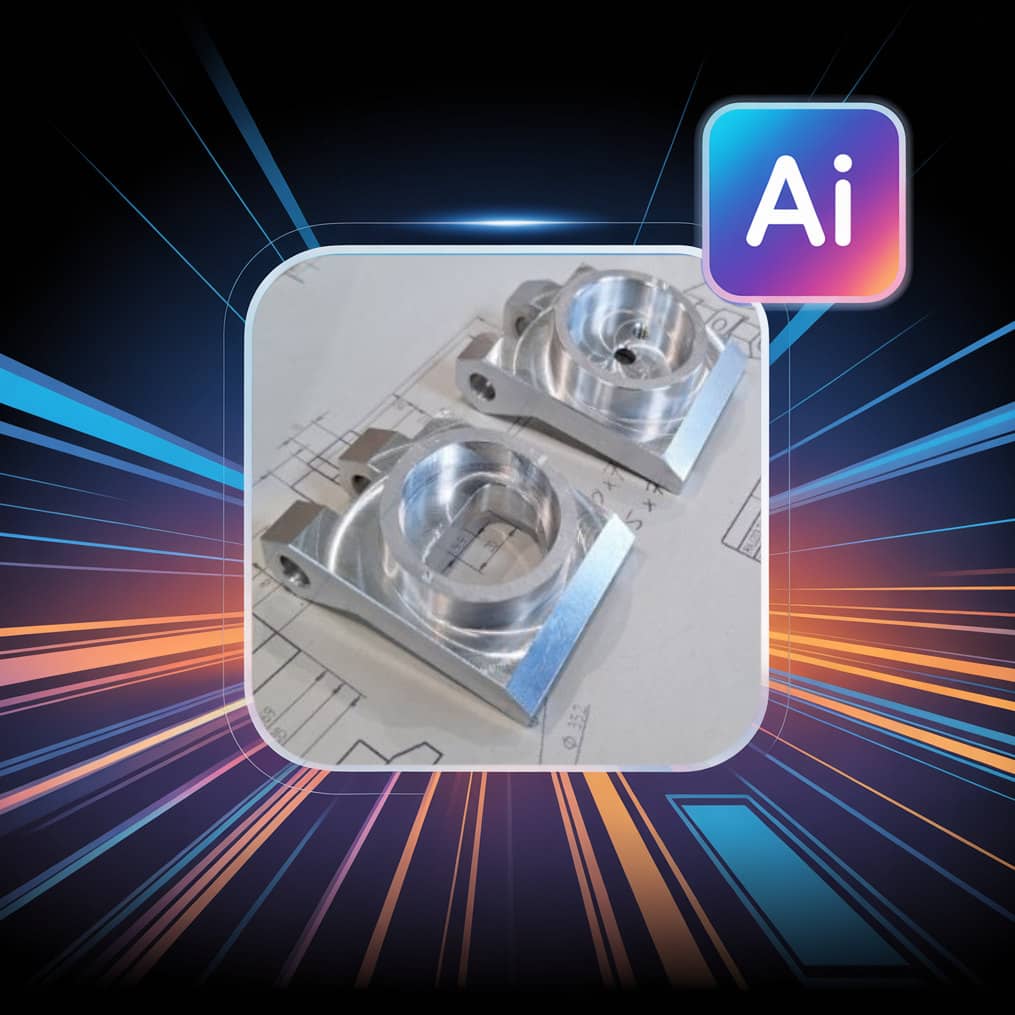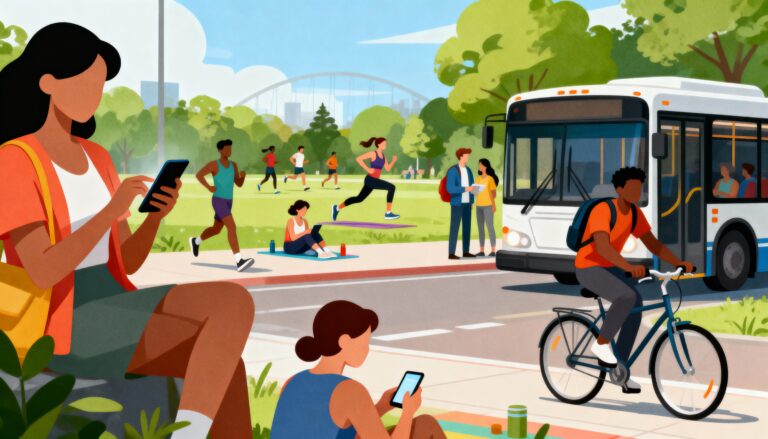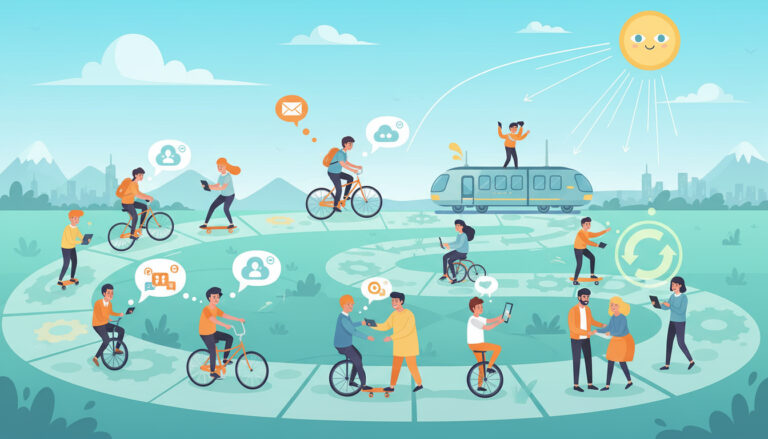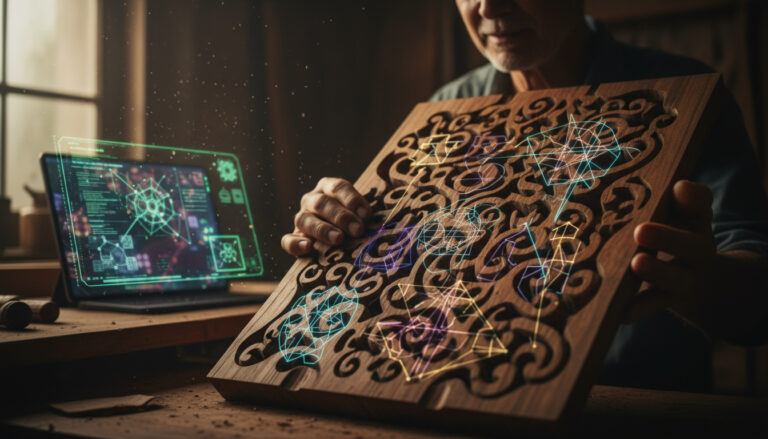
7 AI Design Lessons That Could Shape the Future of Boardy
We built the Boardy the hard way. No simulations, no algorithms, no shortcuts. Only hundreds of hours of prototyping, riding, and refining.
Back then, artificial intelligence was not part of product design. Yet when we look at how AI develops today through iteration, pattern recognition, feedback loops and robustness, we recognize something familiar. These are the same principles that guided us long before they became buzzwords.
As AI reshapes the digital world, it also challenges how we think about physical design. What if the methods behind artificial intelligence could help us reflect on how we design, test and evolve real, tangible things? This is not about replacing craftsmanship with computation. It is about learning from both.
Here are seven AI design lessons that we find surprisingly relevant to physical design and to the way we continue to evolve the Boardy.
Table of Contents
1. Start with Human-centric Problem Solving, Not Technology
AI experts remind us that the goal of any (digital or physical) design is to solve real human problems. An article on AI-first product design stresses that “human-centric problem solving remains paramount” and cautions against using AI for its own sake. Before writing a line of code or training a model, designers should understand user needs and emotional contexts.
This mirrors our origin story. Balázs did not set out to create a lightweight scooter because lightweight materials were trendy; he wanted to ride comfortably in jeans and sneakers, stand upright without hunching, and then tuck the scooter under a desk. Early requirements (wide, flexible deck, high handlebars, and hand brake) weren’t features conjured in a focus group; they came from years of commuting on traditional kick scooters and the physical discomfort those designs caused. When we later added 12″ higher pressure tires or a brake booster, the guiding question was always: does this make the ride better and safer for humans?

AI reminds us to keep the problem—rather than the technology—front and centre. Whenever we consider adding something new to Boardy, the first step will be to ask whether these features genuinely improve the analog riding experience. Any AI integration must augment the quiet joy of pushing off on a wooden board, not complicate it.
Right now, for example, we are exploring the most elegant solution for the kickstand and how to secure the scooter when folded are simple, mechanical challenges that still follow the same principle: human-centric problem solving first.
2. Iterate continuously and embrace feedback loops
Iteration is the heartbeat of both AI and—even more so—handcrafted design. Machine-learning models are useless without constant retraining; they learn by processing data, checking outputs, and adjusting parameters.
Neural Concept’s guide to iterative design notes that non-iterative processes that go straight from idea to final product “carry high risk” and emphasises a cycle of prototype → test → feedback → refine → repeat. A separate article on AI feedback loops adds that systems only improve when feedback is treated as an integral part of the process, rather than an afterthought.
From day one, we built Boardy iteratively. Our first prototype, built with a homemade laminated wooden deck and wheels from a kids’ bike, delivered an unexpectedly smooth ride thanks to its flexible frame. Encouraged, we kept going and built two more prototypes by Christmas 2015. We took them to South France and watched strangers ride them, observing their reactions to the concept as well as how the deck flexed under different body weights. Each observation became a data point.
One rider tried to see how far he could glide on a single push, which led us to experiment with higher-pressure tires to reduce rolling resistance. To improve braking performance, we initially offered a brake booster as an optional add-on — but after receiving overwhelmingly positive feedback, it became a standard feature. These feedback loops continued over the years: the 2018 XXL model for riders up to 165 kg, the addition of mudguards, and the fold-less Lite version. (Which, interestingly, didn’t gain much traction despite its lower price…)
All these insights were carried forward into the 2024 redesign of the 2.0 model, where we prioritized new dimensions of product design: environmental responsibility, sustainability, manufacturability, and long-term reliability. This phase also brought technological evolution: a 60-ton press tool enabled a resin-free board, while more components previously welded are now CNC-machined, enhancing overall precision and consistency.

In AI, iteration happens in microseconds; for us, it unfolds over months — or even years — of riding, listening, and refining. For safety-critical innovations, early releases are always limited to a small group of experienced test riders. Only after thorough testing and several refinement cycles do new components or upgrades become available to everyone.
Yet the lesson remains the same: release thoughtfully, observe honestly, and refine relentlessly.
3. Learn to Recognise Patterns Beyond Numbers
Machine learning excels at recognising patterns in vast datasets. But pattern recognition is not exclusive to algorithms; craftsmen also learn by noticing subtle trends. In AI, a feedback loop collects data, uses it to predict outcomes, then updates its behaviour. On the Boardy workshop floor, patterns emerge not in spreadsheets but in small, physical inconsistencies — the kind you only notice after building hundreds of units and seeing how materials behave over time.
One such pattern appeared where we least expected it: paint thickness.
A few microns of coating variation can make the steering tubes difficult to slide together during assembly, when each pair is precisely fitted by hand.
We could have solved it the easy way, by using plastic bushings like many low-cost scooters do, allowing larger gaps between parts. But that would have introduced noise and play, breaking the silent, precise fit that defines every Boardy.
Instead, we statistically analysed dimensional variations from multiple production cycles, including paint tolerance, and redefined the optimal machining sizes to balance precision, reliability, and manufacturability. That’s pattern recognition, too… human, analog, and deeply tactile.
The same thinking applied to the wooden deck.
We had to identify the exact board configuration that stays flexible enough for effective shock absorption across a wide range of rider weights, yet remains strong and maintains sufficient ground clearance even under heavier loads.
We tested numerous layup structures — cross-grain and longitudinal layers, different wood species, and varying ply counts — while measuring both static and dynamic flex characteristics. Through these tests, we mapped the underlying relationships between stiffness, damping, and load, which ultimately allowed us, through many iterations, to reach the current version of the deck: balanced, resilient, and true to the Boardy ride feel.

Recognising such signals could one day help us validate long-term structural integrity or confirm that our boards continue to perform as intended even after many years of use. So far, we haven’t had a single case where a deck needed replacement due to normal use, and even some of the early-generation models, built with a different technology, are still being ridden after nearly ten years.
These examples don’t just prove durability; they also guide our understanding of how materials age gracefully when design, geometry and craftsmanship are in balance.
4. Be Transparent About Decisions, Not Just Design
In AI, transparency builds trust: people are more likely to rely on a system when they understand how and why it makes decisions.
For us, transparency means something slightly different. It’s about being honest not only in design, but in intent. We’re a small, dedicated team, and we don’t pretend to be a global corporation. Every choice behind the Boardy is visible, not only in the product itself but in the reasoning we share openly.
For example, we often get asked: why is there only one deck version? The answer isn’t secrecy or lack of ambition — it’s transparency. The forming press tool for the deck is a major investment, and producing multiple geometries would multiply tooling costs. So we focused on one optimized configuration that fits the widest range of riders and use cases. It’s a compromise in theory, but in practice, it’s what makes Boardy balanced, accessible and sustainable.

Transparency also means admitting what we’re still learning. Every iteration teaches us something about production tolerances, materials, and human expectations. When we share that process, riders understand the “why” behind every design choice, and that understanding builds trust more effectively than any marketing slogan.
We believe honesty ages better than hype.
That’s why we prefer open explanations to bold claims. And why every Boardy carries not only a serial number, but also a story.
5. Respect the Feedback, but Keep the Vision
Feedback drives progress — in AI and in design alike. But learning doesn’t mean saying yes to everything. AI models that follow every correction lose coherence; handcrafted products can lose their soul the same way.
Rider input has shaped every generation of Boardy — from deck stiffness to handlebar height — yet we always filter ideas through the same philosophy: unplugged freedom, body-friendly motion, and simplicity above all. We explored rear brakes, fancy handlebar-height adjustment mechanisms, extra gadgets… and learned that refinement means keeping what matters, not adding more.
Being small keeps us close to our riders and honest in our choices. We listen carefully, but design with conviction. Because a product made to please everyone ends up pleasing no one. While one built with purpose keeps its identity for years.
6. Sustainability Is a Design Parameter, Not an Afterthought
AI systems consume enormous amounts of energy, sparking debates about sustainable computing. But sustainability isn’t only about power use. it’s about long-term efficiency and purpose.
The same principle applies to physical design: the most sustainable product isn’t necessarily the one made from recycled materials, but the one that lasts. Every extra year of use means less waste, fewer shipments, fewer replacements.
Boardy’s sustainability lies in its simplicity. There are no batteries, no e-waste, and no planned obsolescence; just durable materials, serviceable mechanics and FSC-certified wood. A well-maintained Boardy can last for decades, with replaceable/repairable parts. We design for care, not consumption. For repairability, not disposability.
In AI, sustainability means optimising algorithms for fewer resources; for us, it means creating a product people want to keep, maintain, and eventually pass on. Because true sustainability is not about trends. It’s about respect: for materials, for craftsmanship, and for time.
We’ve built these principles into every step of our production. You can read more in How We Committed to Sustainable Manufacturing.
7. Build strength for real humans, not ideal models
AI models are trained on “ideal” datasets, clean, curated, often detached from messy reality.
But when those systems meet the real world, their limits show. Physical design faces the same challenge: humans are not data points; they are diverse, unpredictable and imperfect.
That is why Boardy is built to serve real people, not abstract averages. Our scooters support riders up to 150 kg and heights up to 2 m, because the human body does not fit into one category.
The reinforced geometry and wider deck are not about oversizing; they are about robustness. In our case, robustness is literal: a structure that flexes, absorbs and endures.
Because real intelligence, and real design, mean staying reliable when life gets unpredictable.
What We Learned from Our AI Design Lessons
AI teaches us how to be efficient. Craftsmanship reminds us why it matters. Real progress lives somewhere between the two.
Each of these lessons, from iteration and feedback to pattern recognition, transparency, balance, sustainability and robustness, reminds us that design is a living process. Whether in code or in wood, intelligence grows from curiosity, patience and care.
We still build the Boardy by hand, in small batches, because we believe real innovation happens at human speed. Maybe one day AI will help us simulate new geometries or predict material behavior, but it will never replace the quiet satisfaction of a perfectly fitted clamp or the first silent glide on a new deck.
In the end, both AI and Boardy share the same goal: to make complex systems feel effortless. And that, to us, is the real definition of intelligence.



